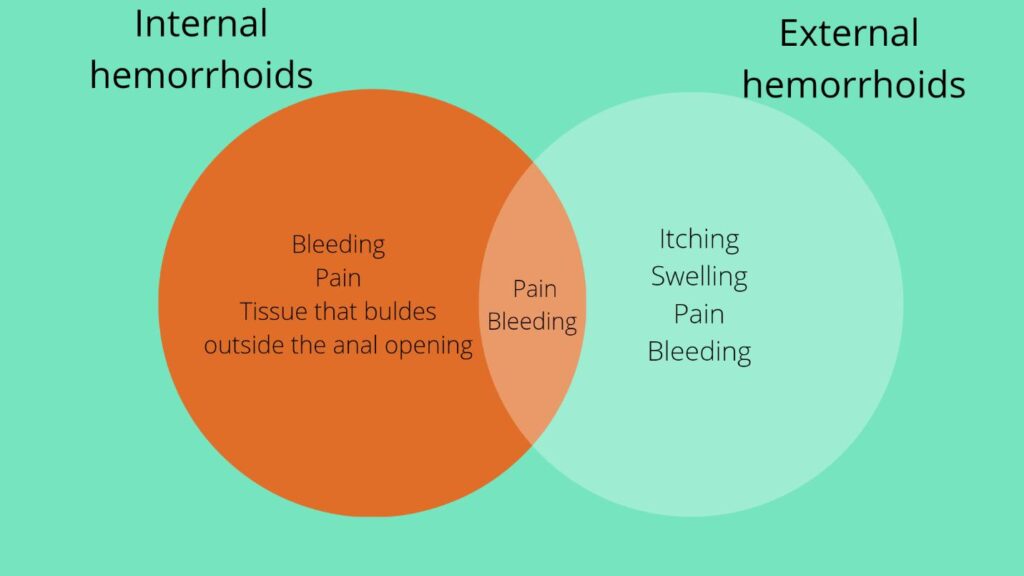No products in the cart.
Hemorrhoids…how to prevent and treat them
Hemorrhoids are very common nowadays. People tend to feel embarrassed about this topic and sometimes they neglect this pathology. They avoid visiting the doctor and, the pain caused by them increases day after day.
But what are hemorrhoids?
Hemorrhoids are swollen veins in the lowest part of your rectum and anus. The walls of this veins stretch so thin that the veins bulges and get irritated. Sometimes hemorrhoids cause rectal bleeding.
Hemorrhoids can be internal, external or thrombosed.
- Internal hemorrhoids can’t be seen or feel. They are not as painful as external hemorrhoids.
Symptoms of internal hemorrhoids include:
- Blood on your poop or on toilet paper;
- Tissue that bulges outside your anal opening (prolapse).
- External hemorrhoids are under the skin around the anus, where there are many pain nerves.
Symptoms of external hemorrhoids include:
- Pain;
- Bleeding;
- Itching;
- Swelling.
- Thrombosed hemorrhoids happen when a blood clot turns an external hemorrhoid purple or blue.
You may notice symptoms like:
- Severe pain;
- Itching;
- Bleeding.

Hemorrhoids examination
What happens during hemorrhoids examination?
Maybe the most embarrassing part of hemorrhoids is the examination. Most people try home remedies or over the counter medications just to avoid the doctor.
The doctor will ask you some questions about the problem and then he/she will explain the procedure to you. Then he/she will proceed with the examination.
- First, you will be asked to undress from the waist down.
- Then you should lie down on your left side, with your knees lifted up towards your chest.
- The doctor puts the gloves and does the examination of the outside of your bottom. After that he/she puts some lubricating gel on the finger and gently slides it into your rectum. This is not painful, but maybe a little bit uncomfortable.
- After that the doctor will discuss with you the results of your examination.
Sometimes for a better examination some other methods are preferred.
When you are more likely to have hemorrhoids?
People at one moment of their life tend to have hemorrhoids. If your parents or another member of your family have hemorrhoids you may also have them.
Another reason that causes hemorrhoids is the increase of pressure in your lower rectum. This can happen from:
- pregnancy;
- extra weight;
- a diet lower in fiber;
- constipation;
- anal sex;
- people who tend to remain in the same position for hours.
Preventing hemorrhoids
As with every other health concern is better to prevent than to cure or treat. So, here are some methods which will help you to prevent hemorrhoids.
- Eat a lot of foods that contain fibers. You can eat fruits, vegetables, whole grains, nuts, seeds, beans and legumes. Fibers help you to have a better digestion. If it is not possible for you to consume foods that contain fibers, then you may take supplements rich in them.
- Drink a lot of water. It will help you to avoid constipation.
- Exercise a lot. Doing physical activity keeps your bowel moving.
- Use the toilet as soon as you feel the urge, don’t wait to go.
- Avoid long periods of sitting.
Treatment
Not always the things go our way. Sometimes even if we try different diets and do physical activity, we have hemorrhoids. At first, we try to ignore them, but when the pain increases, we try to find our own solution, avoiding the doctor. Here are some tips:
- Draw a sitz bath – to relieve itching and irritation, fill a tub with warm water and sit with your knees bent for about 10 to 15 minutes. Gently pat dry the area, but don’t rub it.
- Sit right – try to not sit in the toilet for long periods. That tends to make hemorrhoids push out and swell up. Use a cushion beneath you when you sit on a chair or hard surface. This can ease the swelling.
- Keep the area around your rectum clean – after every bowel movement, gently clean your anal area with a witch hazel pad, a soothing baby wipe or a cotton cloth soaked in warm water. If you have an irritation afterward, apply petroleum jelly or aloe vera.
- Ice packs and cold compresses – sometimes help with the swelling.
If these tips do not help try to use topical creams, ointments or suppositories. Most of them contain a cortisone, but not only. They also contain lidocaine or witch hazel, which help to relieve the symptoms.
Unless it is advised by your doctor don’t use these creams/ointments more than a week.
In the picture below is prescribed how to use a rectal cream, internal or external.


In addition, when you have a lot of pain you may use analgesics, painkiller like aspirin, ibuprofen ecc to alleviate the pain and discomfort.
Sometimes surgical procedures are required to remove the hemorrhoids.
The most commonly used hemorrhoid treatment is rubber band ligation, in which the doctor puts a small elastic band around the base of the hemorrhoid. The band causes the hemorrhoid to shrink and the surrounding tissue to scar as it heals, holding the hemorrhoids in place. It takes two to four procedures, done six to eight weeks apart, to completely eliminate the hemorrhoid.
Hemorrhoidectomy is an invasive procedure needed when you have large, protruding hemorrhoids. The procedure requires anesthesia.
Staples is a procedure that treats bleeding or prolapsed internal hemorrhoids. The surgeon uses a stapling device to anchor the hemorrhoids in their normal position.

